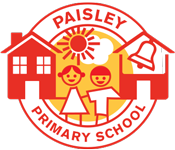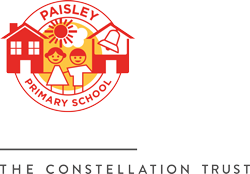

Our ART curriculum
Intent
The teaching of the art and design curriculum has carefully been considered to enable our pupils to become confident artists and designers. At Paisley, we follow a program written by the subject lead in collaboration with leaders from the Constellation Trust who have carefully worked to create a curriculum overview document. Within the document the objectives for each year group are progressively mapped out to ensure pupils are given the acquired skills and knowledge for their primary education journey into KS3 and life beyond the classroom.
Our children will be taught Art and Design in a way that ensures progression of skills and techniques that follows a sequence to build on previous learning. Key concepts and second order concepts are developed and revisited in the spiral curriculum to develop a deep understanding and ensure knowledge and skills are embedded in the long-term memory. Children will gain experience and skills of a wide range of formal elements of art in a way that will enhance their learning opportunities, enabling them to use art and design across a range of subjects to be creative and solve problems, and enabling children to reach their full potential.
Pupils at Paisley will have opportunities to work collaboratively, develop their research skills, develop communication and critical thinking skills, build resilience, think imaginatively and expressively, and are provided with enrichment beyond the national curriculum. They will learn to appreciate various artists, styles, movements and cultural heritages of our society alongside formal elements of art and techniques. Children are taught techniques in drawing, painting, mixed media and 3D, along with other specialisms such as collage, to be able to create their own works of art that show progress and creativity. Work in each unit is celebrated in the form of an end of unit exhibition. Children will know why they are doing things, not just how, and will appreciate the value of art in their futures and in the world around them.
Key concepts
At Paisley Primary, pupils theoretical knowledge will be developed through the study of artists and designers, looking at the history of art and how artists have expressed ideas using different materials and processes. As they move through the school, they will build their practical knowledge through the making skills of drawing, painting and mixed media, developing ideas through sketchbooks and applying their knowledge to their artwork. Pupils’ disciplinary knowledge will be developed by studying the work of traditional, modern and contemporary artists, evaluating and commenting on what is valid and of quality. The key concepts compliment work carried out across the school reinforcing our school values, our 5 curriculum drivers: Reading, vocabulary, community, aspiration and inclusion.
Second order concepts
Second order concepts are fundamental knowledge and skills which are transferable across a range of curriculum subjects. For example, we introduce pupils to the concept of ‘similarity and difference’ early in their education, developing the observational skills and language needed to make comparisons. This is developed and applied as pupils move through the school so they can confidently apply this in all areas of the curriculum by upper Key Stage Two.
A summary of the second order concepts and how they apply to different subjects are provided in the table below.
| Curriculum subject | Significance | Similarity and difference | Cause and consequence | Continuity and change | Responsibility | Communication (Oracy & Written) | Enquiry |
| Art | Significant artists, works of art and art movements. | Comparing works of art and artistic styles. Identifying common features and different approaches | How art has changed over time | Using artistic terminology, evaluating, creative expression, giving opinions, presenting | Visits to galleries, exhibitions, sculptures etc… Investigating art in different places and contexts |
End Points:
By the end of EYFS, pupils will:
- be able use art to be creative and express themselves in different ways
- be able to create pictures of what they can see and imagine
- develop some control when using pencils, paint brushes and other materials
They will know that art conveys both thinking (ideas) and feeling (emotion). They will use a variety of ways to express and communicate through art. They will know that creative thinking involves original responses, not just copying or imitating existing artworks. They will use their imagination, curiosity, creativity, cognition, critical thinking and experimentation skills to allow them to improvise, collaborate, interact and engage in artistic sustained shared thinking. They will have time, space and opportunity to revisit and reflect on artistic experiences. Children in EYFS will safely use and explore a variety of materials, tools and techniques, experimenting with colour, design, texture, form and function. They will share their creations, explaining the process they have used. They will make use of props and materials when role playing characters in narratives and stories.
By the end of Key Stage 1, pupils will:
- be able to use a range of materials in a creative way to design and make products
- be able to use drawing, painting and sculpture to develop and share their ideas, experiences and imagination
- develop their own use of colour, pattern, texture, line, shape, form and space
- know about the work of a range of artists, craft makers and designers, describe similarities and differences between different practices and principles, and use some of their techniques in their own work
By the end of Key Stage 2: pupils will:
- develop their techniques to create and experiment with greater control and choice of materials through the study of great artists and designers
- be confident in the use of sketch books to record their observations, develop, review and refine their ideas
- have improved their mastery of a range of art and design techniques including drawing, painting and sculpture with a range of materials
- be aware of different kinds of art, craft and design and the techniques that are used to create them
Implementation
At Paisley, the Art and design curriculum has been carefully designed and mapped out into a long-term plan. This outlines when key concepts will be taught and revisited to support children’s retention of knowledge and skills as well as progressively leading towards curriculum end points.
The schemes of work have been developed by the school subject lead to ensure full coverage of the Key Stage 1 and Key Stage 2 curriculum which is personalized to our school and local area. It incorporates SMSC development, EYFS – Year 6 and has been designed as a spiral curriculum to follow the key concepts, second order concepts, our teaching sequence and Paisley’s 5 curriculum drivers. It also has been designed with the following key principles in mind: cyclical (pupils return to the same skills again and again during their time in Paisley Primary School), increasing depth (each time a skill is revisited it is covered with greater complexity, prior knowledge (upon returning to a skill, prior knowledge is utilised so pupils can build upon previous foundations).
Each unit is taught in sequential order and is planned with reference to the National Curriculum and the Constellation Trust progressive knowledge document ‘Paisley’s curriculum overview’. The EYFS Statutory Framework objectives ensure progression into Key Stage 1. Short term planning, medium term planning, the long-term plan and knowledge organisers are all informed by ‘Paisley’s curriculum overview’. Formal elements of art are taught throughout each unit which focus on: line, shape, tone, texture, pattern, colour and form. The clear progression ensures that children are continually building on their prior learning as they systematically develop their understanding, leading children towards mastery and carefully identified end points.
At Paisley, Art and design lessons follow the teaching sequence:
- Study the work and techniques of an artist.
- Compare and contrast with the work of previous artists studied or other works in the same style.
- Critically evaluate the artists’ work to inform their own ideas.
- Experiment, investigate and refine the different techniques using appropriate media.
- Create their own artwork, applying new techniques, skills and media to their own work.
- Critically evaluate their work, refining and improving where appropriate.
- Reflect and recap the knowledge and skills remembered and learnt.
- Exhibit work to peers and parents.
Throughout each unit, children revisit prior learning, making links to new concepts, and reflect on new learning and skills. They develop their oracy, a school driver, by using subject specific vocabulary. Children are encouraged to discuss art styles, opinions, ideas, skills and techniques through the progressive terminology within the curriculum. Children also partake in an end of unit exhibition where peers, staff and parents can view their work
SEND
At Paisley, all children have access to the Art & Design curriculum and are encouraged to immerse themselves in their learning. We tailor the curriculum to suit individual and diverse needs and requirements. Teachers have a strong knowledge of the children they teach and adapt learning, activities, resources and end points to overcome barriers to access and enjoy art. The learning objectives provided in the curriculum overview document support teachers with this as does a number of SEND and differentiation insets staff have attended. There is no ceiling on any child’s art learning. This policy was written in line with the schools, SEND Policy and Equality and Accessibility Plans.
Equality
In all aspects of equality, the teaching of Art the school will conform to the school’s Equal Opportunities Policy. Any reasonable adjustments will be made to accommodate all pupils.
Resources
We have a range of resources in school to support the teaching of Art & Design. These are stored in designated areas within the school and are easily accessible to all staff. The library and resource area contain a supply of reference books linked to art and artists. Audits of resources are carried out and orders made to the library company are termly. Art materials are contained in the rt cupboard and large paper in the hall paper cupboard. Pupils have access to iPads and laptops to enable them to carry out research online and complete digital art. Personalised resources are made for lessons as are links to websites, artwork, videos as listed in medium term plans and short term weekly plans. The subject lead sources CPD training to support staff and the curriculum. All purchases will be made through the normal office procedures and authorised by the Head teacher/ authorised signatory.
SMSC and British values are key strands that are embedded across the whole Art curriculum and are revisited in most lessons.
Spiritual development in Art & Design inspires awe and wonder at the natural and spiritual world which has been depicted and expressed in many forms of Art throughout history and today.
Pupils’ moral development is encouraged in Art by providing opportunities for our children to recognise that development takes place within a global context and that local decisions affect and are affected by decisions and processes in other countries. Open mindedness is developed when considering the decisions and actions of artists and people over history.
Social and cultural education is developed through the study of real people in different societies, of artist’s interpretations and expressions of social and cultural content from around the world and through time. In looking at our own locality and others in the world, the children’s sense of identity and community is strengthened. It is promoted through working together, problem solving and taking risks based on carefully thought out plans. Empathy and understanding are gained as well as a developed knowledge of different cultures from the past and present.
British values of tolerance, democracy, individual liberty, the rule of law and respect are developed through Art & Design as pupils develop an understanding of the world in which they live and the wide range of cultures within it, considering the development of today’s ‘British’ culture. By looking at British and local artists we can appreciate achievements in periods of time and consider how they have influenced other and our own art.
Health and safety / Safeguarding
‘Health and safety’ and ‘Safeguarding’ are paramount at Paisley Primary School. Any materials or equipment used by pupils and staff will be used following safe practice procedures. Pupils are taught the need for and knowledge to practice safety in and out the classroom. Fieldwork can often be undertaken to enhance the Art & Design Curriculum and so the school policies for Health and Safety, Safeguarding, e-Safety and Educational Visits through EVOLE are adhered to.
Staff CPD
Regular inset time is given to curriculum subjects for staff CPD. Subjects updates are given, monitoring evaluations shared and any course content are passed to staff. Staff conversations/questionnaires are also completed for staff feel empowered to teach lessons, across all units, and have the confidence ability to teach skills and techniques in art. They also inform the subject lead to make adjustments and provide support.
Impact
The impact of the Art curriculum will be seen through a wide range of assessment strategies. In EYFS staff professional judgements are provided through formative assessments so they quickly make a difference to children’s learning. They inform the provision of activities and experiences which develop children’s skills and knowledge as well as giving opportunity for further practise. Tapestry, WOW moments and other records and celebrations are used to build up a picture of a child.
In KS1-2, our teaching sequence allows children to work through each lesson focus and to self/peer assess as well as formative assessments made by the teacher, thus informing future planning. Pupils misconceptions or gaps in knowledge are addressed and opportunities are provided for further development and practice. Additionally, summative assessments are carried out by class teachers at the end of each unit using Integris which are monitored.
There are also opportunities throughout the school year to recognise the impact of the art curriculum on a love of creativity and art through extra-curricular Art clubs, Art weeks, outside agency Art projects and exhibitions, and school displays.
Our subject leaders also monitor the effectiveness of the art and design curriculum through carrying out regular monitoring evaluations. These evaluations are quality assured by the Curriculum Lead, Senior Leadership and Governors.
The effectiveness of art and design is also monitored through pupil and parental voice throughout the course of the year.
The successful approach to the teaching of Art will result in an engaging, high-quality education that allows pupils to understand and appreciate the value of Art and Design in the context of their personal wellbeing as well as encouraging them to explore Art further as they leave primary school and consider the creative and cultural industries and their many career opportunities.
Further information
